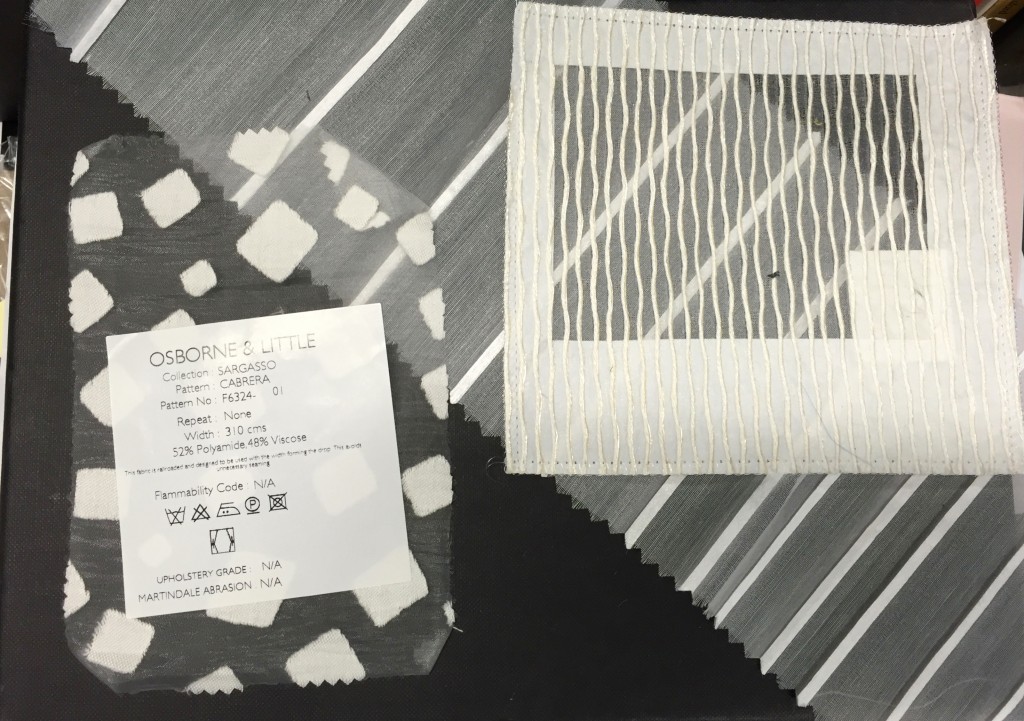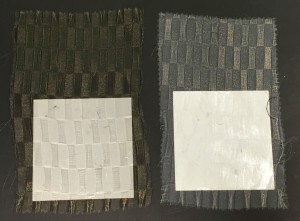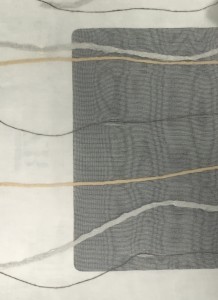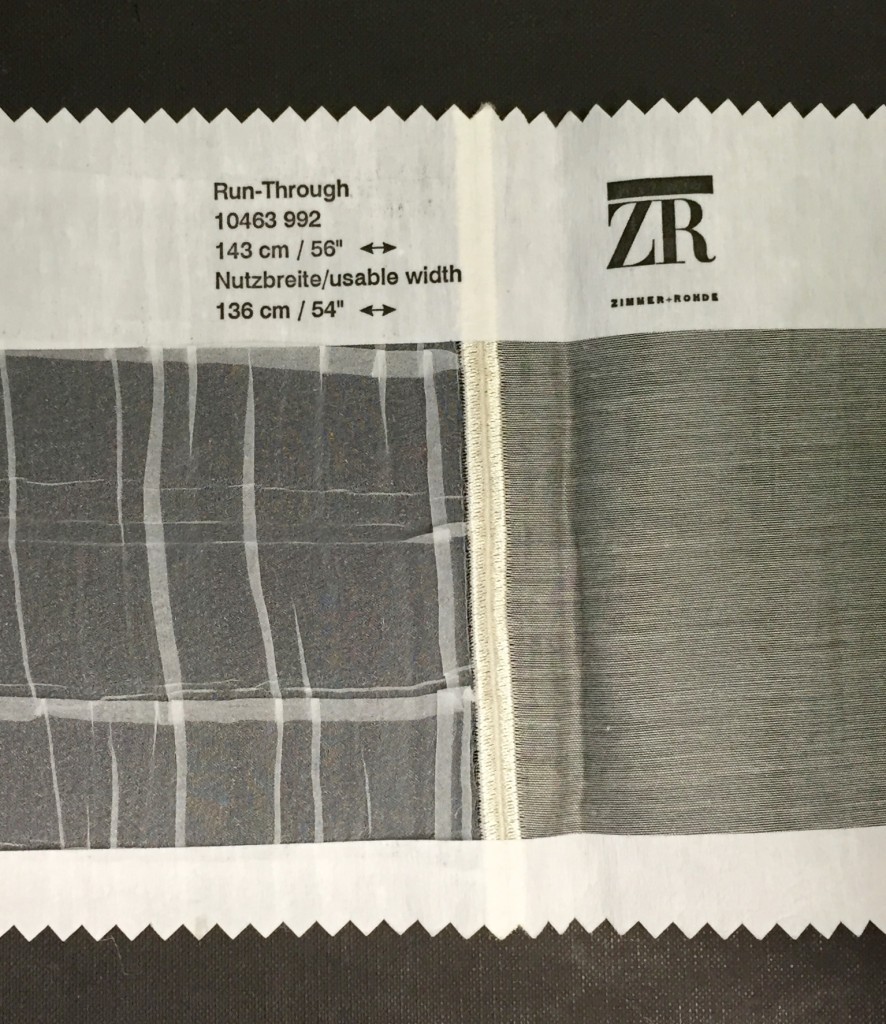
A selection of sheer voiles
Voiles can be a simple and elegant way to enhance your home. They are more versatile and sophisticated than the more traditional net curtain and can be a luxurious way to add a bit of privacy and soften glaring sunlight.
Whilst sheer fabrics aren’t as complicated to order as standard curtains, you don’t need to worry about interlining and backing fabrics, there is still plenty to consider:

A gloss sheer can add a touch of drama to any room
The modern way to hang voiles is in soft waves, which is achieved by using a wave track and a generous amount of fullness/gather. You will need a wave heading on a pre-set wave track. Because sheers are thin you can get away with a “fullness” of 2.25 or 2.5. This is the amount you multiply the width of the window by. The more elaborate heading style you require, the more fullness you will need. You will need to leave a good amount of space for the stack back, well away from the edge of the window to maximise light, and decide if you’d like the curtains to part in the middle or retreat to one side. All curtain ends will be trained to sit in (face towards) the window/wall so that you are never viewing a side hem. This adds to the required fabric width.

Voile fabric
Once you’ve settled on a fullness quota you have your width measurement. You’ll need to check with the fabric supplier how much of the fabric is “useable” as sometimes the stated width includes unprinted boarders. You will need to account for joining seams if putting several panels together. You’ll then need to add 30cm to each width end. Even if your window is quite small, adding curtains that start at the ceiling and drape all the way to the floor always gives the illusion of more light and space. You will need to add 10cm to the desired height and 30cm to the bottom. You can specify turn-up length and with sheers, as they will add to the opacity when doubled over, it can add a nice feature if you match it to your skirting height. If in doubt, always order extra length, as hemming is reasonable simple and extending can be costly. To finish off the hems you’ll want to lead weight your curtains. This can be done in 2 ways, 1) weighted the whole way along. This works for lighter fabrics which will billow too much in the wind, or when you want a very straight effect. 2) Weighted in the corner of each piece. As there is less weight applied in this method, it’s better for fabrics which just need a bit of guidance, or which aren’t going to be exposed to the elements.
For further information the most comprehensive guide to curtain measuring is produced by Merrick and Day and can be purchased here.

Always check the useable width

